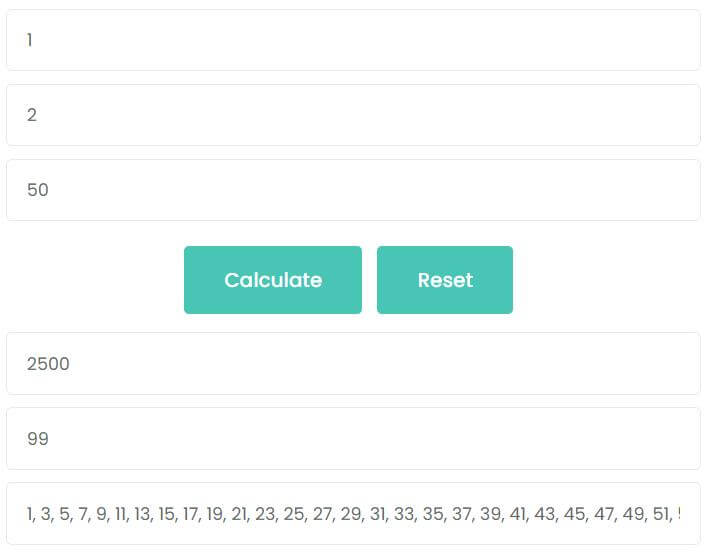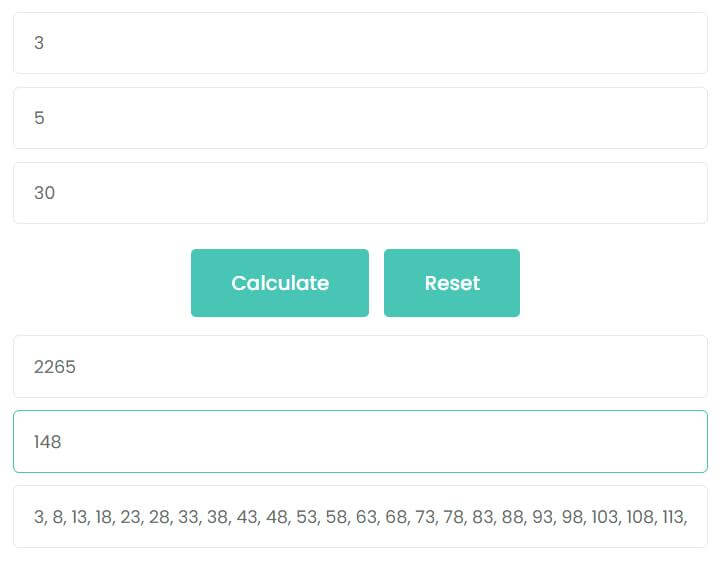Welcome to use the sum and Nth term of arithmetic sequence calculator, this calculator solves two problems: one is to calculate the sum of arithmetic sequence; the other is to calculate the Nth term of the arithmetic sequence.
What is an arithmetic sequence?
Arithmetic sequence refers to a sequence in which the difference between each term and its previous term is equal to the same constant starting from the second term. It is usually represented by AP. This constant is called the tolerance of arithmetic sequence, and the tolerance is usually denoted by the letter d. For example, 1, 3, 5, 7, 9 is an arithmetic sequence with a tolerance of 2.
How to calculate the sum of the arithmetic sequence?
To calculate the sum of an arithmetic sequence, there are two formula methods in addition to the fool’s one-by-one addition.
One is to know the first item, the last item and the number of items in the sequence. The formula is:
Sn = n * (a1 + an)2
Among them, a1 represents the first item of the arithmetic sequence, an represents the last item of the arithmetic sequence, and n represents the length of the arithmetic sequence.
For example, the sum of even numbers between 1 and 100. We know that there are 50 even numbers between 1-100, the first even number is 2 and the last even number is 100. So, using the formula to calculate the sum of even numbers between 1-100 is:
Sn = n * (a1 + an)2 = 50 * (2 + 100)2 = 2550
Another method is to use the number of terms and tolerance of the arithmetic sequence to calculate, the formula is as follows:
Sn = a1 * n + n * (n – 1) * d2
Where, a1 represents the first item of the arithmetic sequence, n represents the number of items, and d is the tolerance.
As example in the above, the sum of even numbers between 1 and 100. In here, a1 = 2, n = 50, d = 2, expressed by the formula as:
Sn = a1 * n + n * (n – 1) * d2 = 2 * 50 + 50 * (50 – 1) * 22 = 100 + 50 * 49 = 2550
How to calculate the Nth term of the arithmetic sequence?
Since the arithmetic sequence is a regular set of numbers, it is not difficult to calculate the Nth term, and its formula is:
an = a1 + (n-1) * d
Where, a1 represents the first item of the arithmetic sequence, n represents the Nth term we want to calculate, and d is the tolerance.
For example, what is the 49th even number in 1-100? Obviously, the first even number is 2, and the tolerance between even numbers is also 2. So the 49th even number is:
a49 = a1 + (n – 1) * d = 2 + (49 – 1) * 2 = 98
Whether calculating the sum of arithmetic sequence or calculating the Nth term of the arithmetic sequence, you must keep the formula in mind. If you are not familiar with formulas, or do not know how to use formulas, it will be a big trouble. Of course, even if you can use formulas proficiently, it will make you very distressed when you encounter large numbers. So, we developed this free online tool – Sum and Nth Term of Arithmetic Sequence Calculator, which can help you calculate the answer in a few milliseconds. Next, let’s take a look at how this tool is used.
How to use the sum and Nth term of arithmetic sequence calculator
The procedure to use the sum and Nth term of arithmetic sequence calculator is as follows:
- Enter the first item of the arithmetic sequence.
- Enter the tolerance into the second input box.
- Enter the number of items into the third input box. Note that this must be a positive integer.
- Click Calculate to get the sum of the arithmetic sequence and the Nth term.
- Click the Reset button to start a new calculation.
Solved examples using the sum and Nth term of arithmetic sequence calculator
Calculate the sum of arithmetic sequence
For example: What is the sum of odd numbers between 1 and 100?
As we know, the first odd number is 1 and there are 50 odd numbers between 1 and 100. The tolerance of odd numbers is 2.
- Enter 1 into the first input box.
- Enter 2 into the second input box.
- Enter 50 into the third input box.
- Finally, press Calculate button.
As the picture shows, the sum of odd numbers between 1 and 100 is 2500.

Calculate the Nth term of the arithmetic sequence.
For example: An arithmetic sequence 3, 8, 13, 18. What is the 30th term?
- Enter 3 into the first input box.
- Enter 5 into the second input box.
- Enter 30 into the third input box.
- Finally, press Calculate button.
As the picture shows, the 30th term of the arithmetic sequence is 148.

Latest calculators
Standard Form to Slope-Intercept Form Calculator
Slope Intercept Form Calculator
Slope Calculator: Calculate Slope, X-Intercept, Y-Intercept
Reciprocal of Complex Number Calculator
Conjugate Complex Number Calculator
Modulus of Complex Number Calculator
Profit Percentage Calculator: Calculate Your Profitability Easily
Attendance and Absence Percentage Calculator
Circular Segment Radius Calculator
Regular Polygon Side Length Calculator